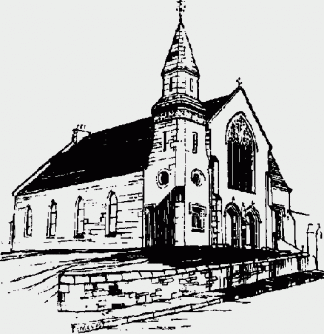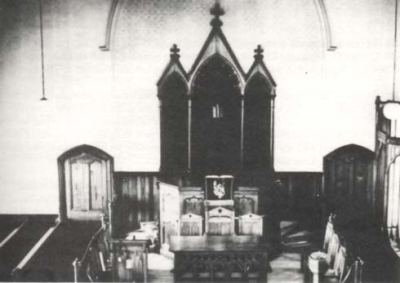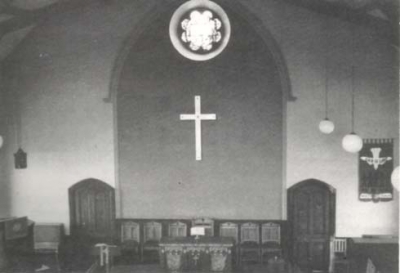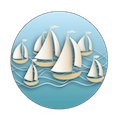Origin of St. Andrew’s Congregation
 The roots of the St. Andrew congregation go back to the days when Queensferry was famous for making the best brown soap in Scotland! A number of people from Kirkliston, Dalmeny, Abercorn and Queensferry were unhappy with the appointment of Thomas Robertson as minister of Dalmeny and the way in which the appointment was made by the Earl of Rosebery who had the patronage of Dalmeny. They met at Echland to petition the Burgher Presbytery of Edinburgh for a minister on 13th November 1775.
The roots of the St. Andrew congregation go back to the days when Queensferry was famous for making the best brown soap in Scotland! A number of people from Kirkliston, Dalmeny, Abercorn and Queensferry were unhappy with the appointment of Thomas Robertson as minister of Dalmeny and the way in which the appointment was made by the Earl of Rosebery who had the patronage of Dalmeny. They met at Echland to petition the Burgher Presbytery of Edinburgh for a minister on 13th November 1775.
The history of the Secession church, which first broke away from the Established Church of Scotland in 1773 is fascinating but complex. Queensferry played an important part in the beginnings of the break-away denomination when Ebenezer and Ralph Erskine, the two brothers leading the movement, celebrated communion at Queensferry the very day that they had been removed from their parishes by the Church of Scotland. Although the parish minister Rev. James Kid did not join the Secession himself this historic happening stirred an interest in the affairs of the Seceeders throughout Queensferry and the surrounding area.
The church the Erskines founded was opposed to the system of patronage whereby a minister was appointed by a ‘patron’, usually the local Laird, but in Queensferry the Burgh Council, often without the congregation having a say in the matter. The new church split in 1747 over the issue of whether to take an oath of allegiance after the ‘45 rebellion. It was to the more liberal of the factions, “The Burghers”, who were happy to take the oath, that the people of Queensferry applied for a minister in 1775.
At first the Seceeders in Queensferry met in a house fitted out for public worship. By September 1776 they had built a church, at Church Place at the foot of The Loan, and began looking for a minister in earnest. For various reasons the congregation found it hard to elect a minister and there was a good deal of ill-feeling which had to be resolved by a day of humiliation and fasting! At last, on 23rd September 1779, the Rev. Andrew Dick was inducted as the first minister of the Secession Church in Queensferry. A manse was built in 1789 near the Church during the long ministry of Rev. David Carruthers, who was succeeded by his son William. By 1834 the stipend was £70. During the building of the Forth Bridge, the membership of the congregation reached its highest point with members totalling 344. Soon after the bridge was open, however, numbers tell to just under 200, as the tradesmen moved away.
The present Manse was built prior to the arrival in 1890 of Rev. John Keir from Dunbar, and it was during his long ministry that the new United Presbyterian Church, the present Queensferry Parish Church was built. It was opened by the Moderator of the United Presbyterian Church on 20th February 1894. The church was to seat 350 people and it cost £1800 to build. However the records state that ‘through the liberality of the people and their friends, aided by a legacy from a late member and a sum of £430 from the sale of the old property they had the satisfaction of entering the new building free of debt’.
In 1900 the various Secession churches which had united to form the United Presbyterian Church in 1847, and the Free Church formed in 1843, joined together to form the United Free Church of Scotland which in turn united with the main Church of Scotland in 1929 thus drawing to a close 154 years of Secession church history in Queensferry.
| St. Andrew Church, before 1962 | St. Andrew Church, 1985 |
 |  |
In Recent Years
By the late nineteenth century, Queensferry had four churches, the Parish Church, the United Presbyterian Church, the Scottish Episcopal Church and a Roman Catholic Church which was built in 1887 and stood behind Number 8, The Loan.
In 1900 the United Presbyterian Church on The Loan became incorporated in the new United Free Church of Scotland and adopted the name South Queensferry United Free Church. It is interesting to note that a substantial source of income was seat rents. A card inserted in a brass frame on the pew indicated the names of the family members who used that seat. It was accepted that on special occasions and at certain services, a member could occupy any seat.
At a Kirk Session Meeting on 29th August 1929, the Session was informed that because the United Free Church was joining with the reunited Church of Scotland it would be necessary for the church to be renamed. This caused individual protests from elders, but it was agreed that as from 1st November, the Church would be named South Queensferry St. Andrew Church. Meanwhile the Parish Church was also renamed Queensferry South Parish. The name was never popular but it was not until 1953 that the Kirk Session won Presbytery approval to change the name to Queensferry Old Parish Church.
Meanwhile by the 1930’s the Roman Catholic congregation had grown considerably. The present chapel was completed and consecrated in 1934 and named St. Margaret’s. There was also an active Gospel Hall in Queensferry which closed around 1950.
On 7th March 1956, the Commission of the General Assembly instructed that an Act of Union should take place between the congregations of Queensferry Old and South Queensferry St. Andrew Church. The united congregation was to be known as “Queensferry Parish Church” and the basis of the union was that all property and funds would become those of the united congregation. By agreement the two places of worship were used alternately a month at a time. This was never a happy arrangement and ultimately a decision was made: St. Andrew Church on The Loan would be “the” Church, and the Old Parish Church would be used as a Sunday School Centre. The Old Church was sold in 1970, the money being used in the building of the new Church Hall.
After the decision was taken for St. Andrew Church to become “The Parish Church”, the Kirk Session with the assistance of the Congregational Board completely refurbished the front of the Church which was then rededicated on Sunday 25th March 1962. The building of the Church Hall was the next improvement, and it was dedicated by Very Rev. Dr. R. Selby Wright on 7th March 1973. More recently the Vennel Hall, which was built in the 1920’s as the Church Hall for the Parish Church. was refurbished and rededicated on 24th October 1979. The Computer Organ was installed in the Church on 1st April 1984.
